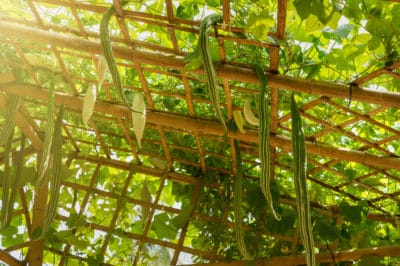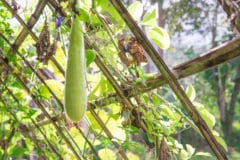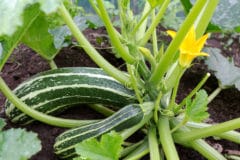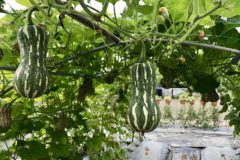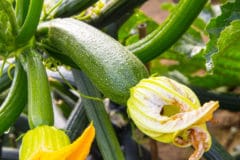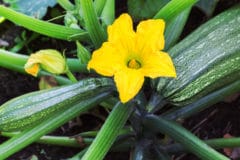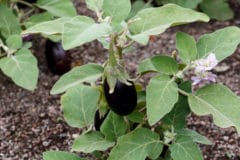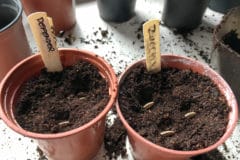Why Go Vertical?
Zucchini are susceptible to several fungal diseases, which can be prevented by watering at soil level and keeping the vines up off the ground. Vertical growing makes it easy to do both! Trellising also allows you easy access to the vines for harvesting and weeding, and saves valuable garden space.
Choosing Your Variety
Not all zucchini are suitable for trellising. Bush varieties have been bred to stay compact and don’t produce the trailing vines necessary for attaching to a trellis. There are still plenty of types to choose from, however. Many heirloom varieties are sprawling, and some even climb on their own. The best varieties for vertical growing on a trellis include:
- Italian Ribbed Zucchini
- Black Hawk
- Shooting Star
- Flaminio
- Costata Romanesco
- Tromboncino
- Black Forest
- Table Dainty
- Long Green Trailing Courgette
How to Trellis Your Plants
Before planting, or when your plants are still small, set up your trellis. Zucchini plants are too heavy to trellis using strings or slender poles like peas and beans. Wooden or metal trellises work best. Anchor them to sturdy posts or a nearby wall to keep the weight of the plants from knocking them over.
As your zucchini plants begin to grow, coax them onto your trellis. Most varieties do not create the tendrils necessary to anchor themselves. Keep them in place by tying them gently to the trellis. Strips cut from old nylons or t-shirts work well since the fabric is soft and stretchy.
Trellised vines can’t support overlarge fruits. Be sure to harvest them when they’re small, or, if you prefer to let your zucchini grow larger, use a sling made from a strip of an old t-shirt to provide support and protect your vines.
How to Stake Your Plants
An alternative method for growing zucchini vertically can be done with larger bush-type varieties. This requires pruning the zucchini plant to encourage it to grow taller. Before planting, drive a wooden or metal stake at least 4 feet (1.23 meters) tall into the ground. Plant your seeds or seedlings very close to the stake.
As it grows, tie the plant to the stake and remove the lowest leaves. This encourages the plant to produce more upper leaves. As you continue anchoring the vine and removing the lowest leaves, your plant will begin to resemble a palm tree! Strange as it looks, this process has the benefits of trellising without the hassle of a trellis.
